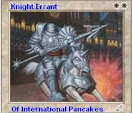The picture above shows the scenarios for when a piece has lack of space:
- Pry the box open by removing the weakest defender
- Squeeze the box so the piece has less space
- +A add attacker
- -D remove defender
- - - - - plug the hole in the box so the piece can't skedaddle
- Chase the piece into the box
- LoA squeeze the piece out of the box into a line of attack
The picture above shows the two methods to gain an extra tempo
- Red: duplo attack
- Green: exchange with additional threat
- T: Target
- D: Defender
- T = Target
- D = Defender
- +A (T)= add Attacker against Target
- +A (D)= add Attacker against Defender
- +D? = can opponent add defender?
- -D = deflect overworked defender
- X = exchange or capture the defender
- Filled red arrow = clear the LoA
- 2nd = look for squares where two attackers converge (points of pressure of the 2nd order)



I think your idea of using pictures rather than purely text is an excellent idea!
ReplyDeleteIn make it stick: The Science of Successful Learning, by Brown, Roediger III and McDaniel, I found this gem regarding "memory palaces" (based on "the method of loci") [pg 186]:
"Humans remember pictures more easily than words. (For example, the image of an elephant is easier to recall than the word "elephant") So it stands to reason that associating vivid mental images with verbal or abstract material makes that material easier to retrieve from memory. . . . Images cue memories.
(I'm working my way back through this book for the second time, searching for "clues" as to how to develop effective Anki decks for my granddaughter.)
In your examples above, the first diagram is very clear. I would suggest adding a title (perhaps "Lack of Space") as the pattern recognition "peg" on which to "hang" the recall of the relevant scenarios. For clarity, I'm using your terminology from the Tree of Scenarios as well as the diagram above to "connect the dots" between the two different views.
(1) Pry the box open by removing the weakest defender.
(2) Squeeze the box so the piece has less space.
(3) Chase the target piece into the box.
(4) Plug the hole in the box so the piece can't skedaddle.
(a) Cover potential flight square(s).
(b) Block potential flight square(s) with his own piece(s).
(5) Squeeze the piece out of the box into a line of attack (LoA).
(6) Cut off the piece from potential defenders.
(7) Add an attacker.
(8) Remove a defender.
I think that "add an attacker" and "remove a defender" ideas are sufficiently general processes as to not be required explicitly. However, if these two things are something that is often overlooked, then it helps to have them explicitly in the diagrams.
Diagrams 2 and 3 did not map easily to the Tree of Scenarios. I could see the connections to different scenarios, but not easily map them to specific questions:
B.A.D. – Add attackers with tempo
PoP – Clear a blocked LoA with tempo
Is of 2nd order
Capture defender –
Target can be saved with tempo?
Can defender be recaptured with tempo?
I’m not suggesting a rigid one-to-one correspondence is necessary or desirable, but in the initial stages of applying the Tree of Scenarios and seeking outside comments, it might be more helpful to show a direct connection (at least for those of us who have not been privy to all of your thought processes).
Nicely done. Not sure if or when this should be done.... I have notice how often a prepatory move such as pawn move which covers a future flight square or a bishop move that restricts a diagonal makes an ordinary position become a tactic position. Cheers
ReplyDelete